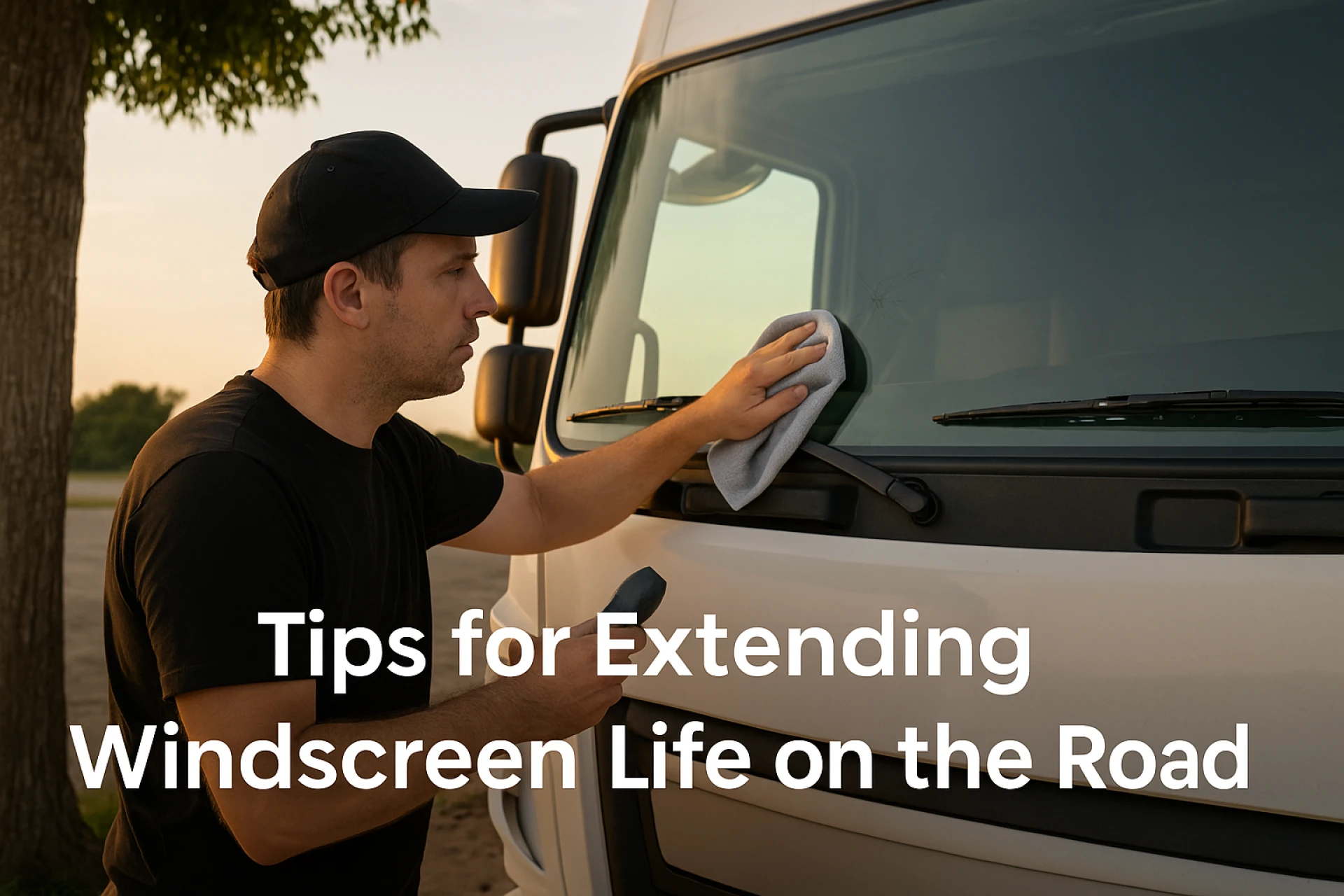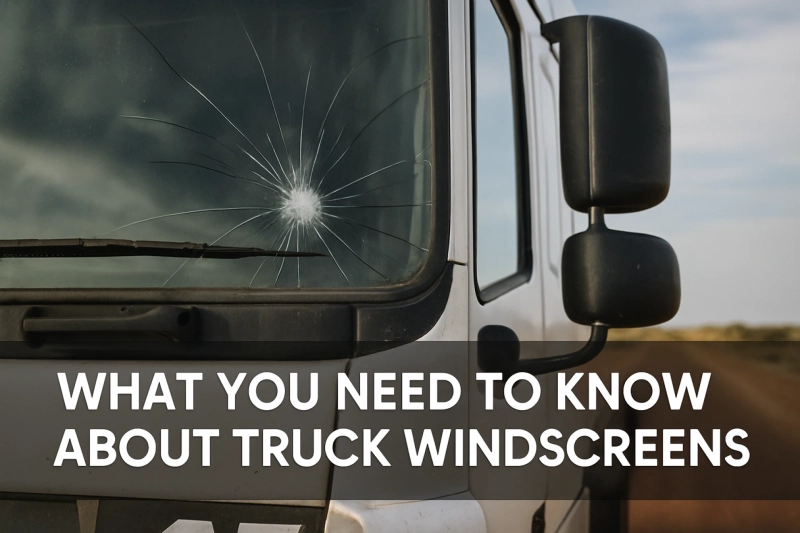Truck windscreens are often overlooked until something goes wrong — and when they do, it’s never convenient. Whether it’s a long-haul trip across the country or short-range urban deliveries, clear vision and structural integrity are non-negotiables. The windscreen does more than shield you from the elements; it’s part of the vehicle’s frame and increasingly tied to modern safety systems. From my years behind the wheel, I’ve learned that ignoring a crack or delay in fitting can quickly snowball into safety issues.
That’s why truck windscreen replacement isn’t just about fixing a piece of glass. It’s about maintaining visibility, meeting roadworthy standards, and keeping you safe behind the wheel, without delays or hassle. In this article, we’ll unpack what makes a truck windscreen more complex than it looks, how regulations shape your responsibilities, and what options you’ve got when repairs or replacement are on the cards.
Why truck windscreens play a bigger role than you think
The front windscreen on a heavy vehicle isn’t just about deflecting bugs or rain. It's a structural component that contributes to the cab’s rigidity and helps with airbag deployment. With the rise of ADAS (advanced driver-assistance systems), it’s also a sensor housing zone for cameras and lane-assist technology.
Failing to replace a damaged windscreen properly could:
- Obstruct or distort forward visibility
- Interfere with onboard sensor calibration
- Compromise air-tight seals, leading to water or dust ingress
- Impact compliance with heavy vehicle safety checks
From personal experience, driving overnight between Adelaide and Broken Hill in low-visibility fog was a wake-up call. A single chip in the wrong spot made glare unbearable, and I had to pull over until dawn. That one chip? Easily preventable.
Understanding legal expectations for windscreen safety
Each state in Australia enforces standards around visibility, glass condition, and driver safety, especially for trucks. These aren’t just guidelines — they’re baked into roadworthiness inspections and defect notices.
In NSW, for example, vehicles must meet specific visibility and condition standards. Cracks, delamination, or unauthorised tinting can all affect your vehicle’s compliance status. Regulations make it clear that the windscreen plays a role in the broader safety framework of the truck.
Knowing the latest on vehicle safety features is crucial when operating commercial vehicles. If your windscreen doesn’t meet the required clarity or structural integrity standards, you're risking not just a fine — but the safety of everyone on the road.
How to know when your truck windscreen needs replacing
You don’t need to be a mechanic to spot signs that your windscreen may be past its prime. Most issues start small — a chip, a faint crack, a bit of warping at the edges — and gradually become a visibility risk or structural flaw.
Watch out for:
- Cracks that span across the driver’s field of vision
- Bullseye or star-shaped chips near sensor zones
- Fogging or moisture between the windscreen layers
- Poor sealing leading to water leaks or whistling
I once had a split-pane windscreen on an older Freightliner that looked fine in daylight but flared dangerously under night lights. Lesson learned: always check how cracks behave under headlights and wiper movement.
Exploring the different types of truck windscreens
Truck windscreens aren’t universal. Depending on the age and design of your vehicle, you might need a very specific type of glass or a specialist installer to handle it properly.
Here are some common types:
- Flat laminated windscreens – Seen in older or retro-styled trucks
- Curved panoramic glass – Common in long-haul modern freightliners
- Split-panel windscreens – Found in American imports or vintage models
- Smart windscreens – Equipped with rain sensors, lane detection, or dash cams
An upcoming post will dive deeper into types of truck windscreens, including tips on sourcing OEM vs aftermarket glass and how to navigate compatibility with ADAS recalibration needs.
How to make the right choice in a replacement service
There’s more to a windscreen replacement than glass and glue. It’s about finding the right fit — literally and professionally. In my experience, the difference between a rushed job and a professional install is night and day, especially in terms of long-term durability.
Here’s what to ask your provider:
- Are they experienced with heavy vehicles specifically?
- Do they supply OEM or high-grade equivalent glass?
- Will they recalibrate any onboard sensors or ADAS equipment?
- Do they offer on-site service at depots or rest stops?
I once had a poorly sealed install that whistled at highway speeds and leaked near the dash during storms. It was a pain to redo — especially in the middle of a logistics run.
Tips for extending windscreen life on the road
Even with toughened laminated glass, truck windscreens take a beating. But regular maintenance can delay or even prevent the need for full replacement.
Try these field-tested practices:
- Inspect the screen after long trips — check for microchips
- Avoid tailgating — reduces stone chips from vehicles in front
- Park in shaded or sheltered locations — limits heat stress
- Clean wiper blades regularly — dirty blades can cause tiny scratches
- Use quality screen wash and avoid harsh chemicals
These steps won’t make your windscreen invincible, but they do extend its usable life and keep clarity high during tough conditions.

Why safe installation practices matter more than speed
Replacing a windscreen isn’t just a case of swapping out glass. Proper installation ensures pressure distribution, weather sealing, and sensor accuracy — all of which contribute to safe driving.
When reviewing service options, consider those that follow safe windscreen installation tips, especially when dealing with newer trucks. A minor misalignment can throw off camera readings, affect lane departure systems, or cause wind turbulence in the cabin.
Some signs of a bad install include:
- Water leaks near the dashboard or A-pillars
- Visible gaps in sealant or uneven fit
- Wiper blade skipping or dragging
- Poor acoustic insulation at highway speed
If you notice these signs, it’s worth getting a second opinion — even if the glass seems fine on first glance.
Final thoughts
Truck windscreens are a small part of the vehicle, but they carry a heavy load of responsibility — from structural support to compliance and sensor functionality. Understanding what type you need, how to care for it, and when to call in a replacement service isn’t just useful — it’s essential for any driver clocking serious kilometres.
With the right awareness and a bit of regular maintenance, your windscreen can do its job quietly and keep you focused on the road ahead.


